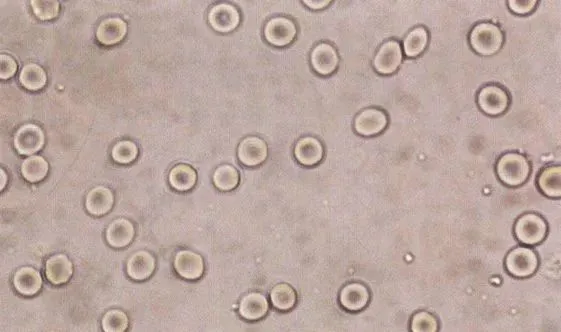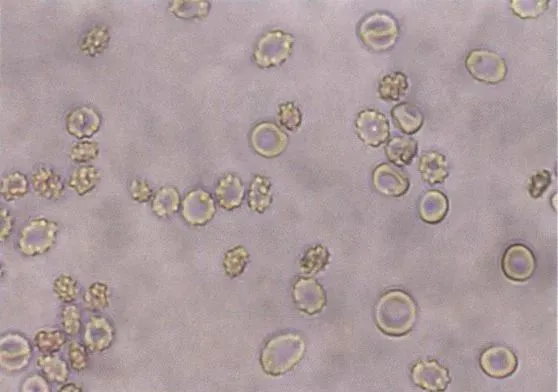
At 26, Jose Sweet rushed to the hospital early one morning, clutching an emergency appointment slip and anxiously approached the doctor. “I might be in serious trouble,” he said. When asked what was wrong, Jose hesitated before softly saying, “I noticed blood in my urine this morning…”
This sight sent Jose into a mental frenzy. Could blood in the urine mean something life-threatening?
What Causes Blood in the Urine?
After a series of questions, the doctor learned that the previous night, Jose had bought a lot of discounted red-fleshed dragon fruit from the supermarket and eaten it all. Some fruits and vegetables, like red-fleshed dragon fruit and beets, contain natural pigments that can turn urine red, resembling blood.
However, there are various reasons for red urine, and not all are alarming. Some are temporary, while others might indicate underlying health issues.
- Healthy Individuals: Intense exercise, heavy physical labor, cold baths, or prolonged standing can cause temporary blood in the urine.
- Diet: Consuming certain colored vegetables and fruits can also turn urine red.
- Medications: Drugs like rifampin, phenytoin, and phenothiazines can cause red urine without the presence of blood cells.
Hematuria, or blood in the urine, is a common clinical finding. Microscopic hematuria detection rates range from 1% to 18%, depending on factors like age, gender, frequency of testing, and risk factors. Pathological hematuria, caused by underlying conditions, needs careful evaluation and differentiation.
What Is Hematuria?
Hematuria can be classified into two types: microscopic hematuria and gross hematuria.
- Microscopic Hematuria: This is when red blood cells are only visible under a microscope. A normal random urine sample typically shows no red blood cells, but after centrifugation, a few red cells may be seen. More than three red cells per high power field (HPF) in centrifuged urine indicates microscopic hematuria.
- Gross Hematuria: This occurs when blood is visible to the naked eye. One milliliter of blood per liter of urine can make it appear red.
Types of Hematuria
Hematuria can be further categorized based on the appearance of red blood cells in the urine:
- Uniform Red Blood Cell Hematuria:
- Characteristics: More than 70% of red blood cells are normal in shape and size.
- Source: Usually indicates bleeding from areas below the glomerulus, such as the urinary tract.
- Associated Conditions: Capillary rupture, urinary tract inflammation, stones, tumors.

- Non-Uniform Red Blood Cell Hematuria:
- Characteristics: More than 70% of red blood cells are deformed.
- Source: Typically indicates glomerular bleeding due to diseases affecting the glomerular basement membrane.
- Associated Conditions: Glomerulonephritis, lupus nephritis, nephrotic syndrome.

- Mixed Hematuria:
- Characteristics: Contains both uniform and deformed red blood cells.
- Source: Indicates bleeding from both glomerular and non-glomerular sources.
- Associated Conditions: IgA nephropathy is a common cause.
Common Causes of Hematuria
Uniform Red Blood Cell Hematuria:
- Temporary Causes: Intense exercise, prolonged standing, cold baths, heavy labor.
- Urinary System Diseases: Infections, stones, tumors, congenital abnormalities, trauma.
- Reproductive System Diseases: Prostatitis, seminal vesiculitis.
- Systemic Diseases: Infections, endocrine disorders, blood diseases, cardiovascular conditions.
Non-Uniform Red Blood Cell Hematuria:
- Commonly associated with kidney-related conditions such as acute and chronic glomerulonephritis, pyelonephritis, lupus nephritis, and nephrotic syndrome.
Mixed Hematuria:
- Often caused by diseases that involve both glomerular and non-glomerular bleeding, with IgA nephropathy being a primary example.
Diagnostic Tests for Hematuria
When experiencing symptoms of hematuria, it’s crucial to visit a reputable hospital for a thorough evaluation. Common diagnostic tests include:
- Urinalysis with Sediment Examination:
- Checks for protein and red cell casts.
- Urine Red Cell Morphology:
- Determines the percentage of abnormal red blood cells to identify glomerular bleeding.
- Urine Three-Cup Test:
- Collects initial, midstream, and final urine samples to pinpoint the bleeding source.
- Bacterial Culture:
- For suspected urinary tract infections, a clean-catch midstream urine sample is cultured.
- CT Scan:
- Provides detailed imaging of the urinary tract.
- Ultrasound:
- Non-invasive imaging to check for abnormalities in the kidneys and bladder.
- Intravenous Pyelogram (IVP):
- An X-ray test to examine the kidneys, ureters, and bladder.
- Renal Biopsy:
- For detailed cellular and tissue analysis.
Final Advice
- Rest and Avoid Strenuous Activities: Minimize activities that could exacerbate bleeding.
- Stay Calm: If you notice blood in your urine, don’t panic. Visit a hospital promptly for an accurate diagnosis and appropriate treatment.
By understanding the potential causes and seeking timely medical advice, you can address hematuria effectively and maintain your health.

